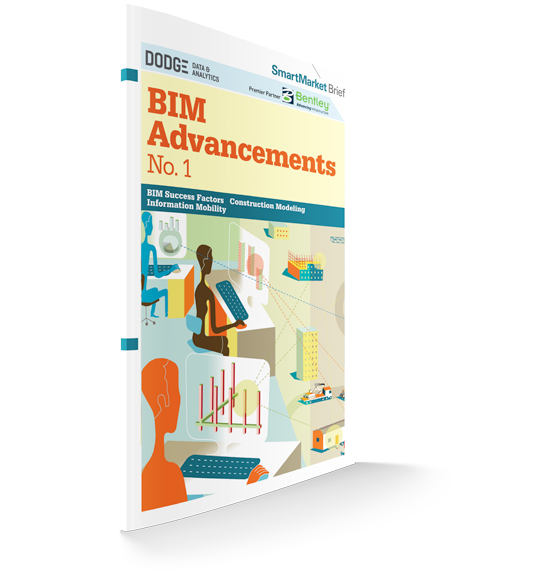The world of infrastructure is rapidly changing. New technologies are making it much easier to collaborate, coordinate projects and manage change amongst disciplines and throughout the lifecycle. The evolving availability of BIM (building information modeling) has been very interesting to observe. BIM was confused with parametric modeling, sometimes associated to a single asset type, or perceived as a product or solution. It is none of those things, rather, it is a technology enabled methodology used to manage the processes associated with the design, construction and operation of an asset. Implementing building information modeling successfully involves behavioral, cultural and technological changes: transforming your organization, adopting new processes and implementing new standards.
The focus of this inaugural edition of the SmartMarket Brief: BIM Advancements series is on the perspectives of the largest architects, engineers and contractors on three critical topics: how they measure their success with BIM, work with models that are developed specifically for construction and fabrication, and leverage information mobility to improve efficiency and productivity.
The research on BIM success factors provides insight into the percentage impact of BIM on six key project outcome metrics, and the frequency and value of ten project factors that influence success with building information modeling. It also identifies the frequency and negative impact of six obstacles to BIM effectiveness, and the four most important success factors for building information modeling.
Construction modeling research provides insight into the frequency and value of seven types of construction models produced by trade contractors, and six key uses for construction models on projects. It also identifies which parties are most frequently authoring construction models for specific uses.
Finally, the research on information mobility explains the current and future uses of various modes of sharing information, and the most important past and future improvements to information mobility, and the project benefits it provides.
Get access to the full brief by clicking the button below.

